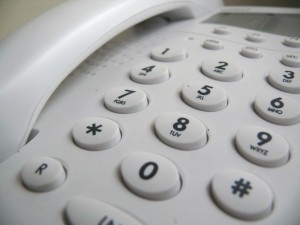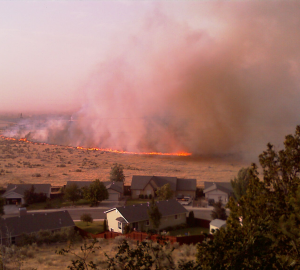From Smoke to Response: The Dispatcher's Side of the Story
August 11th, 2014
With fire season in full swing and more acres of Nevada vegetation burning by the day, I recently began to wonder what happens when a 911 call is placed to report smoke or flames. If Hollywood gives any indication, the call is placed and a fire engine lights up immediately, with firefighters rushing into it to go fight the blaze. Well, Hollywood exaggerates on most everything else, so my curiosity, as usual, won out. I spoke with an on-duty supervisor at my local dispatch agency to understand what goes on when someone calls 911 for smoke or flames.
Erin has worked at my local dispatch agency for a while, and in the short time I spoke with her, I could tell she was a woman who was adept at gathering details quickly and who didn’t miss a beat.
She explained that there are three general steps to her side of the call:
- The first thing she’ll ask for is an address. If the caller is calling from a land line, then her technology will gather that information automatically, but most people are calling from cell phones these days. If the caller is calling from a cell phone, they’ll need to give her an address or the nearest cross streets.
- She’ll then find out what help is needed. If the emergency is a fire, she’ll ask which type. This part is crucial as the answer will determine what kind of help Erin will order. If it’s a wildland fire, she’ll ask for brush trucks; if it’s a house or building fire she’ll request structure vehicles. The right type of help needs to be ordered right off the bat, as having the wrong type of help arrive to the emergency would waste precious time and could be ineffective to fight the blaze.
- After she has this information, she’ll set to work entering it into her computer. The National Fire Protection Association says that a dispatcher has to enter the information in the computer within 30 seconds of the call being placed. The fire dispatcher on duty has another 30 seconds to take that information and send it to the fire department.
Erin assured me that dispatchers can usually make this time frame; occasionally a nervous caller who doesn’t have the information ready will cause that time to increase. Dispatchers understand that callers can feel nervous or anxious but their cooperation is paramount. As such, dispatchers are trained to help a caller by asking their questions quickly and directly.
Aside from having their location or the location of where they see smoke coming from ready when they call, callers should let their dispatcher know if there are any potentially hazardous materials inside a structure that’s near or is on fire. They should also be prepared to describe the size of the fire, and if it’s a wildfire, tell how far it is from neighboring structures. Dispatchers will also take down the description of an arsonist right away and a caller should be prepared to give that information.

Courtesy of the Boise Fire Department
After my conversation with Erin, I feel like I know what goes on behind the scenes when someone reports a fire. My biggest takeaway? Location. I’ll make sure to have an address ready if I ever need to report a fire. The Living With Fire Program actually talks about the importance of having your address visible for help when it arrives, and recommends that lettering be four inches high. Read about it in their Fire Adapted Communities publication.
Until next time,
Natalie Newcomer
